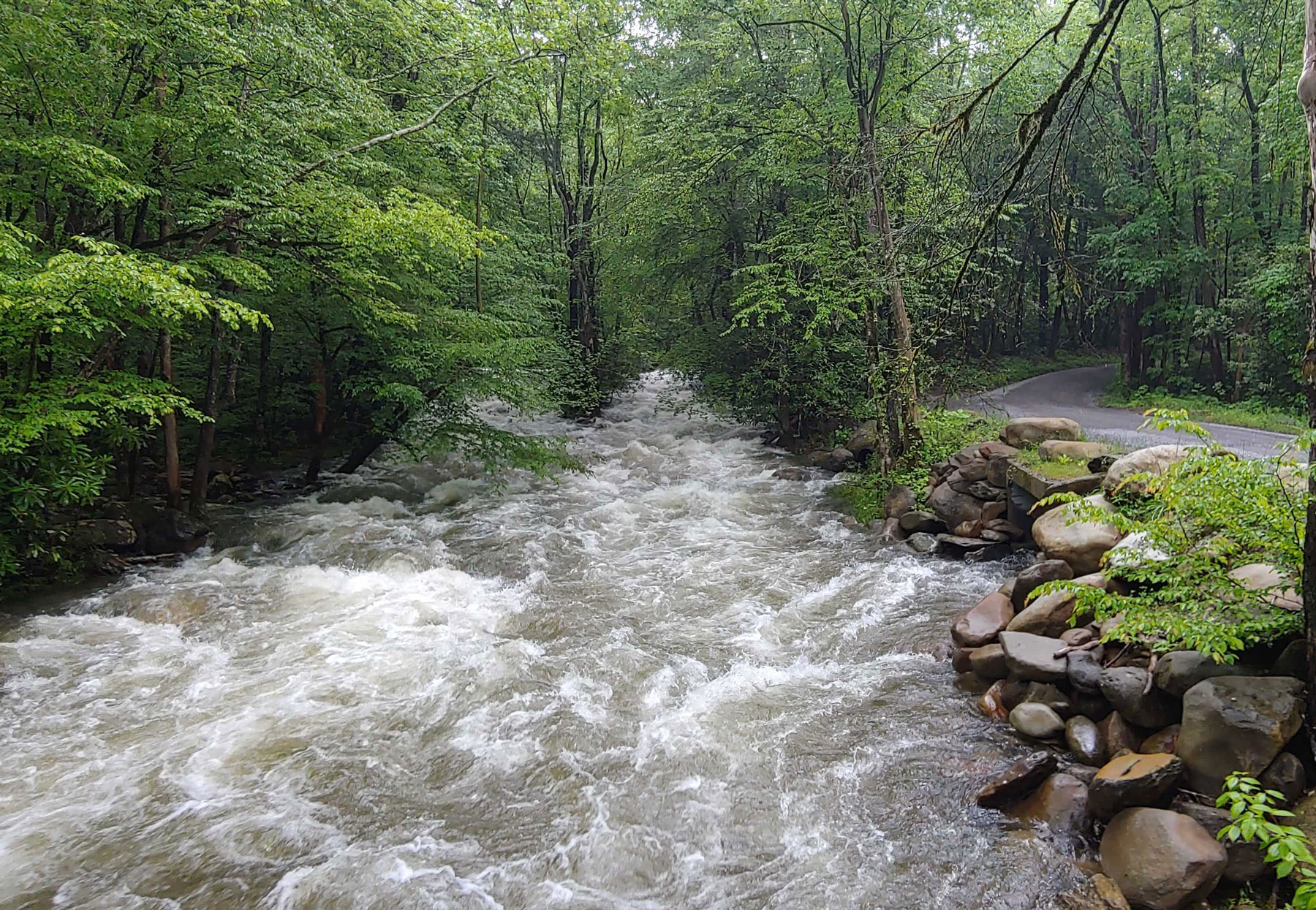
Story and photos by Sue Wasserman

Ashley Morris had a dream. The Great Smokies-loving biology professor from Greenville, South Carolina-based Furman University was intent on immersing her students in diverse park experiences.
She and I met serendipitously, shortly after I began my stint as Great Smoky Mountains Association’s Kemp Writer-in-Residence and just before she was about to embark on their three-week adventure. Incredibly curious as well as more than a little envious about this journey that would include backcountry camping, direct experiences with rangers, and an up-close-and-personal look at the impact of tourism, I asked if I might tag along one day.
What a day it was. We decided to meet at the Porters Creek trailhead in the Greenbrier section of the park. Rain had been falling steadily that week, sending the creek into a raging, energy-charged torrent. I imagined Fern Branch Falls, a lovely series of cascades about two miles from the trailhead, would be equally over-the-top. With no specific plan in mind, I suggested we wander up for what I felt certain would be a breathtaking, breath-giving experience.
There was ample chit-chatting on the way up as the students told me a little about themselves and their experiences, and I excitedly pointed out blooms like common wood sorrel while talking about other flowers such as white fringed phacelia that blossom on this trail in early spring.
The falls exceeded my already grand expectations. Water seemed like it was spilling freely from every nook and cranny.
As we basked in the wonder, I asked if we might do a mindful breathing exercise to become more settled in the present and presence of our lush surroundings. Afterwards, I suggested a quiet walk back to the trailhead to move more deeply into the rhythm of the forest, rather than our individual conversations.
Once we returned to the trailhead, chit-chat turned into emotion-filled conversations as I asked about their experiences to date.
Sally, an applied math and IT major, spoke of feeling out of her element initially. “I didn’t realize there was so much history behind the park,” she said. “I’m just beginning to grasp how special nature is.” She added this experience also motivated her to take nature breaks next semester.
Business major Elle—who will now be adding a minor in environmental studies—discovered previously unexperienced excitement and curiosity within herself. “Being here has brought me a lot of clarity as well as newfound interests. I feel centered in myself here.”

Elizabeth, a sustainability science major, began to grasp just how many people from a multitude of specialties it takes to protect a park.
Nic, a double anthropology and environmental education and conservation major, was deeply impacted by how rangers showed so much passion for educating visitors and inspiring them to protect our natural resources. “During the summers, I work as a trail guide, taking people to the beach on horseback,” she said. “I feel like, instead of being frustrated, I will be more open now to what my guests are thinking and experiencing.”
As the students shared their thoughts, I kept turning to look at their leader, Ashley, who was visibly moved. “One of the biggest things I’ve taken from this experience is just how amazing it is that the park’s rangers have been so willing to spend time with us,” she said. “Thinking about what we’ve done these past 14 days has been beyond my wildest dreams.”
What I hadn’t realized until then was how involved the park had been from the get-go, helping Ashley bring her dream to life through a program called Smoky Mountain University, better known as SmokyMtnU. According to Interpretive Ranger Stephanie Sutton, who spearheads the program with fellow ranger Christine Hoyer, SmokyMtnU is designed to give university students a thorough, hands-on view of all things Smokies.
“So often, young people come in who don’t understand natural places or how they fit in the park,” Sutton said. “We give them an opportunity to interact with professionals in the park who share their knowledge of topics such as geology, fire education, resource protection, air quality, and nature and forest therapy. We also give them opportunities to camp in the backcountry. Seeing the transformation that takes place between the first day we meet and when they depart is pretty powerful.”
Oh, how I would have loved to have met these students on their first and last days! I’m grateful enough, though, for that single afternoon, knowing that these students, no matter what they do after graduation, will not only have a better understanding of the national park but of their place in nature and its value in their lives.
While I wonder how such an experience might have impacted a younger me, the 60-year-old me remains wide-eyed, knowing my writing residency in Great Smoky Mountains National Park bears a striking resemblance to SmokyMtnU, confident the experience will be transformative for me as well.
Subscribe to get the latest posts sent to your email.
The Great Smokies Welcome Center is located on U.S. 321 in Townsend, TN, 2 miles from the west entrance to Great Smoky Mountains National Park. Visitors can get information about things to see and do in and around the national park and shop from a wide selection of books, gifts, and other Smokies merchandise. Daily, weekly, and annual parking tags for the national park are also available.